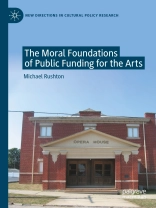This book provides a detailed account, and critique, of diverse approaches to the arts funding question, with a focus on the arm’s length arts councils that are the norm in the Anglo-American world. It builds on economic methods, the liberal-egalitarian framework of John Rawls, the communitarian opposition to the liberal framework, the capabilities approach to equality, and the cultural conservatism of Roger Scruton and others. In each case, the book considers the very practical aspect of public funding of the arts, namely, what are the implications for what ought to receive priority, and what parts of the cultural world are best left to their own, private sector, devices. It is not a work of “arts advocacy”. Rather, the book challenges assumptions, and sparks critical debate in the field.
Table des matières
1 Introduction.- 2 The Economic Method.- 3 Liberalism, Neutrality, and the Arts.- 4 Egalitarianism and Public Funding for the Arts.- 5 Communitarianism.- 6 Conservatism.- 7 Multiculturalism.- 8 Keynes’s Grandchildren.
A propos de l’auteur
Michael Rushton teaches in the Arts Administration program in the O’Neill School of Public and Environmental Affairs at Indiana University, and is Co-Director of its Center for Cultural Affairs.He is the author of Strategic Pricing for the Arts (2014) and the editor of Creative Communities: Art Works in Economic Development ( 2013), and has published articles on all aspects of cultural affairs, including copyright, freedom of expression, public funding of the arts, the role of nonprofit organizations, tax policy and the arts, authors’ legal rights, and the arts and local economic development, spanning a career in this subject area of twenty-five years.












